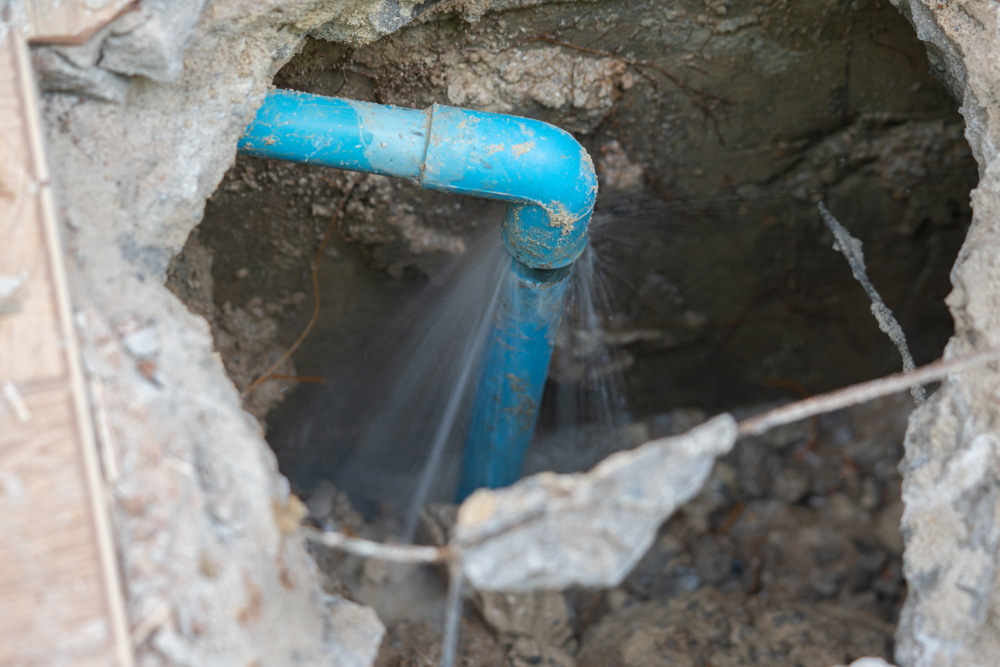6 Ways to Locate Concealed Water Leakages in Your Residence
6 Ways to Locate Concealed Water Leakages in Your Residence
Blog Article
They are making a few good observations regarding Hacks to detect leaks overall in the article in the next paragraphs.

Early detection of dripping water lines can reduce a possible disaster. Some little water leakages may not be noticeable.
1. Analyze the Water Meter
Examining it is a surefire method that aids you uncover leaks. If it moves, that indicates a fast-moving leakage. This implies you may have a sluggish leakage that can even be underground.
2. Inspect Water Consumption
Evaluate your water costs and track your water consumption. As the one paying it, you need to notice if there are any type of disparities. If you detect sudden changes, in spite of your consumption being the same, it indicates that you have leaks in your plumbing system. Remember, your water bill ought to fall under the very same range monthly. An unexpected spike in your costs shows a fast-moving leakage.
A consistent boost every month, even with the very same routines, shows you have a slow leakage that's additionally gradually intensifying. Call a plumber to thoroughly inspect your residential or commercial property, particularly if you feel a warm location on your flooring with piping below.
3. Do a Food Coloring Test
When it involves water usage, 30% comes from bathrooms. Examination to see if they are running appropriately. Drop flecks of food shade in the tank and also wait 10 mins. If the color somehow infiltrates your dish throughout that time without flushing, there's a leakage in between the tank and also dish.
4. Asses Outside Lines
Do not neglect to examine your exterior water lines too. Must water leak out of the link, you have a loosened rubber gasket. One little leakage can throw away bunches of water and also spike your water expense.
5. Examine the situation as well as evaluate
House owners ought to make it a practice to inspect under the sink counters and also even inside closets for any bad odor or mold development. These 2 warnings show a leakage so timely interest is called for. Doing routine inspections, also bi-annually, can save you from a significant problem.
Check for stainings as well as damaging as a lot of pipelines and also appliances have a life expectancy. If you presume leaking water lines in your plumbing system, do not wait for it to intensify.
Early discovery of leaking water lines can reduce a prospective disaster. Some little water leaks might not be noticeable. Inspecting it is a surefire way that helps you find leakages. One little leakage can waste bunches of water as well as surge your water costs.
If you think dripping water lines in your plumbing system, don't wait for it to escalate.
How to Know If Your Home Has a Hidden Leak
Water Meter Reveals Inexplicable Water Usage
If you’d like to test whether or not there’s a leak somewhere in your home, you can do this using your water meter. Here is how to conduct the test:
Don’t use any water in your home for at least 30 minutes; this also means not turning on faucets or water-using appliances.
Go outside, and check your water meter for activity.
If your water meter shows that there was activity, even though no one was using any water, this proves that there is a leak in your home.Visible Mold or Mildew Growth
Leaks behind walls create moist, dark environments that allow mold and mildew to grow and thrive. Eventually, you might see mold growth forming on the wall closest to a hidden leak.
If mold is growing in an area that receives a high amount of moisture, such as a bathroom, it may simply be an indication that better ventilation is needed. However, if you see mold growth on a wall or the ceiling in an area where you would not expect, you probably have a hidden leak.
Musty, Mildew Odor
Sometimes you might not be able to see the mold or mildew that is growing as a result of a leak. However, the smell can give the problem away just as easily. If you catch a whiff of something musty, there’s a good chance that old water is collecting somewhere in your home that you can’t see.
Stained/Warped Walls, Ceilings, or Floors
When your home soaks up water, a variety of red flags can become visible, including ceiling stains, bubbling drywall, warped walls, and sagging floors. While these issues can be caused by excess humidity, they can also be signs that a pipe or plumbing connection has started leaking behind your walls.
Inexplicably High Water Bill
After a while, you get a general sense for what your water bill should be. If you own a pool or sprinkler system, your bill will tend to be higher during summer. However, if you receive a water bill that seems especially high, and you can’t figure out what caused it, then you may have a hidden leak somewhere that’s increasing your bill.
https://www.plumbingjoint.com/blog/2019/july/how-to-know-if-your-home-has-a-hidden-leak/

We were shown that report on Detecting hidden plumbing leaks through an acquaintance on another web blog. Are you aware of somebody else who is very much interested in Detecting hidden plumbing leaks? Feel free to promote it. I enjoy reading our article about Detecting hidden plumbing leaks.
Report this page